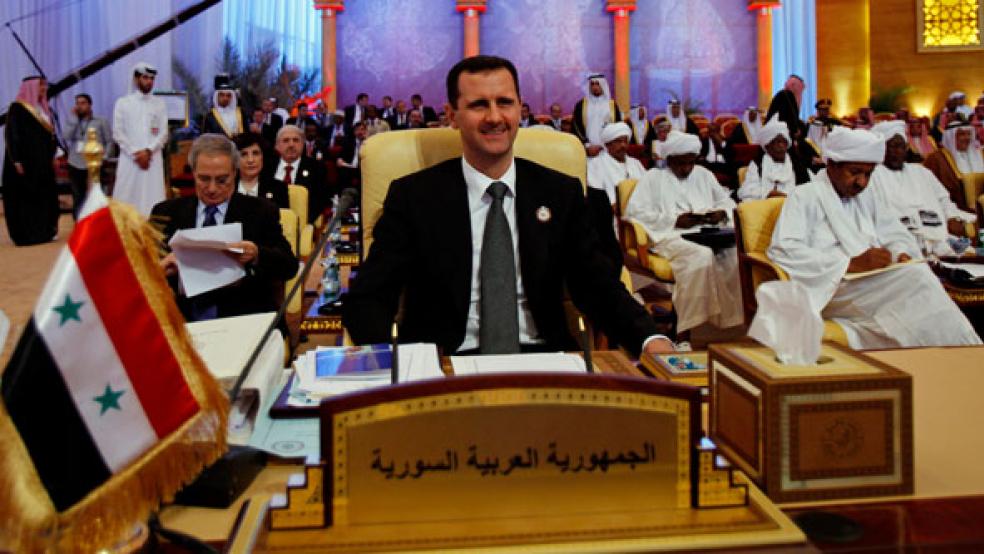Scretary of State John Kerry and Defense Secretary Chuck Hagel took the administration’s case for action against Syrian President Bashar al-Assad to the Senate yesterday, fielding difficult questions from lawmakers who were openly skeptical about the effectiveness of a cruise missile attack.
At the conclusion of the marathon session, which lasted well into the evening, Senate Foreign Relations committee members forged a deal that would set a 60-day deadline for U.S. military action in Syria, with one 30-day extension possible, according to a draft of the resolution.
The proposal, which was drafted by Senators Robert Menendez (D-NJ) and Bob Corker (R-TN), would also prohibit the participation of U.S. ground forces in Syria.
Still, the hearing on Tuesday afternoon introduced a number of questions.
For instance, Kerry made clear that deterring future chemical weapon use was just part of the President Obama’s agenda. The second part is to unseat Assad.
This second goal advances a number of concerns. One of the primary ones is fiscal: How much would different courses of additional action cost?
If history is a guide, potential long-term entanglements could end up costing the United States hundreds of millions, if not billions, of dollars. And this new spending would come at a time when the Pentagon is trying to do more with less.
CHEAP AT THE START
Gordon Adams, a defense budget expert and professor at American University, said the cruise missile strike reportedly being considered would be relatively cheap by military standards.
“The kind of strike they’re talking about would only cost about $100 million,” he said Monday. “It could creep up a bit higher depending on how many missiles they use, but it wouldn’t be enormous.”
RELATED: SYRIAN DEBATE COULD OVERSHADOW KEY FISCAL ISSUES
Adams also dismissed the claim that sequestration would impact the effectiveness of the strikes. When news of the strikes broke, James Inhofe (R-OK) said, "We must not forget this president has put us on the brink of a hollowed force. Our troops are stretched thin, the defense budget has been slashed to historic levels, and we are facing an unprecedented time of unrest across the Middle East amid growing concerns about Iran’s influence on the region and its nuclear ambitions,” the top SASC Republican added. “No red line should have been drawn without the strategy and funding to support it.”
"The sequestration link to Syria is political, not monetary, not budgetary," Adams said, dismissing the criticism. "It's not like DOD is in a position where it can't do what the president is asking them to do. As described, it's relatively cheap. It’s not going to empty the coffers."
PAYING FOR THE UNEXPECTED
However, looking beyond the actual strikes, there is enormous potential for big spending by DOD. In a July 19 letter outlining military options, Chairman of the Joint Chiefs of Staff, General Martin Dempsey, said, “Thousands of special operations forces and other ground forces would be needed to assault and secure critical sites," including chemical weapon depots. Kerry hinted at the same thing in his testimony on Tuesday.
The price tag for these kinds of operations? Dempsey pegged it at $1 billion per month.
During his testimony Tuesday, Kerry referenced the U.S.-led NATO intervention in the Balkans in the late 1990s as an example of a successful intervention to stop human rights abuses. But he didn't mention the cost of this success.
The United States spent $15 billion to secure the peace there, which, adjusted for inflation, is $22 billion. The vast majority of this money was spent on troop deployments.
Afghanistan and Iraq proved that waging war is expensive and inefficient. Bosnia proved that keeping the peace is no bargain either. So while an initial strike against Syria might be cheap, the long-term costs of stabilizing the country and securing chemical weapons could turn out to be a toxic fiscal mess.





